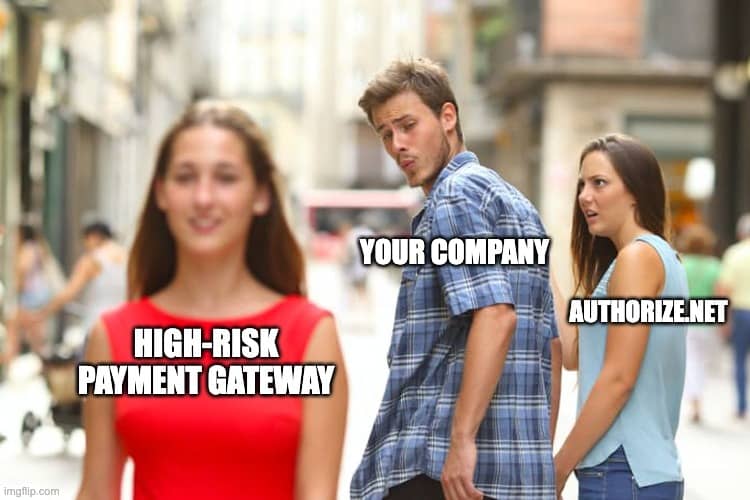What's Considered High-Volume Invoice Processing?

When it comes to invoice processing, there’s no one-size-fits-all benchmark. What might be high-volume invoice processing for one business might not be for another.
Some general guidelines can help determine if your invoice processing falls into the high-volume category.
Learn what’s considered high-volume invoice processing and how using technology can help you manage your invoicing workflow and payment processing.
What is High-Volume Invoice Processing?
High-volume invoice processing means a business handles large numbers of invoices daily. This can be a challenge for businesses of all sizes, including high-risk businesses. There are many ways you can improve efficiency and reduce the hassle associated with high-volume invoice processing, including:
- Automation: Automating as much of the process as possible can help speed things up and reduce errors.
- Electronic invoicing: Sending invoices electronically can save time and money by eliminating the need for printing and mailing.
- Online payments: Accepting payments online can help streamline the process and make it easier for customers to pay on time.
By taking steps to streamline your invoice processing strategy, you can eliminate unnecessary costs and improve your business’s overall efficiency.
What Is Accounts Payable?
Accounts payable (AP) is an accounting term that refers to the money owed by a company to its suppliers. This debt is typically in the form of invoices for goods or services.
AP is a current liability, meaning it’s money that the company expects to pay within the following year. While AP can be a significant expense for a business, it’s also an essential source of working capital. This is because many suppliers are willing to extend credit to their customers, meaning companies can purchase inventory and pay for it later. As a result, AP can play an essential role in helping businesses grow and scale.
If your company processes a large number of invoices each month, it’s crucial to have an efficient and effective AP team in place. There are a few key things that you can do to improve your AP process, including AP automation, outsourcing AP, and enhancing internal controls.
What Do You Need to Do to Process Invoices?
To process invoices, you need to do a few things. First, you must gather all the invoices that need to be processed. Accounting staff can do this by retrieving them from customer accounts or requesting them from new vendors and other suppliers.
Once all the invoices are gathered, you need to verify that the information on the invoices is accurate. This includes checking the quantities of items, the prices of items, the terms of payment, and making sure there are no duplicate invoices. If any errors are found, businesses need to contact the supplier to resolve the issue.
Once all invoices have been verified, you can begin processing them. Your AP department records the AP invoices in your accounting software and issues payments to suppliers.
Matching Invoices Against Outstanding Purchase Orders
In any business, it’s essential to keep track of financial data. This is especially true when it comes to purchase orders (POs). POs are typically issued when a company orders goods or services from another company. The PO includes the agreed-upon price and quantity of purchased goods or services. Once the goods or services have been received, an invoice is sent to the company that placed the order. The invoice you receive should match the PO on file in terms of price and quantity.
Matching invoices against outstanding POs can be a time-consuming process, but it’s essential for accurate bookkeeping. There are a few different ways to approach this task. One option is to generate a report that lists all outstanding POs using accounting software such as QuickBooks or FreshBooks. Once you have the report, you can compare it to your list of invoices to see which ones have yet to be paid.
Another option is to set up a matching system in your accounting software. With this system, you can enter POs and invoices into the software, and the system will automatically match them up. This can save a lot of time, but updating your information is crucial to account for all POs and invoices.
No matter your method, matching invoices against outstanding POs is vital in keeping accurate financial records. Doing this regularly ensures your books are in order and you’re not overpaying for goods or services.
Verifying Your General Ledger Coding
As the backbone of your accounting records, your general ledger (GL) plays a critical role in ensuring the accuracy of your financial statements. That’s why you must verify your GL coding before closing the books each month. Fortunately, verifying GL coding requires just a few simple steps.
First, check that your transactions have been posted to the correct account. To verify this information, you can run a trial balance or compare your posting journal to your general ledger. If you find any discrepancies, correct them before closing the books.
Next, check your balance sheet and income statement to ensure your general ledger supports them. If there are any differences, investigate the cause and make the necessary adjustments.
Finally, review your charts to ensure all your accounts are still active and that there haven’t been any changes in their balances. By taking these simple steps, you can help ensure the accuracy of your financial statements.
What is the Average Number of Invoices Processed Per Month?
The average number of monthly invoices can vary depending on the business.
For example, a small business with only a handful of clients may only issue a few invoices per month, while a larger company with many clients may process several hundred invoices.
The average number of invoices processed per month also depends on the payment terms of the invoices. For example, if most invoices are due within 30 days, the business will likely process more invoices in a month than if the payment terms were 60 or 90 days.
Businesses that process a large number of invoices often use invoice processing software to automate the task and improve efficiency.
How Many Invoices Are Processed Per Hour?
Invoice processing time depends on many factors, including the type of business, the size of the company, and the number of employees.
The best way to determine how many invoices your business processes per hour is to ask your employees. Employees who handle invoicing can give you an accurate estimate of how many invoices they process in an hour.
With this information, you can change your business model and employee KPIs if necessary to ensure your business is as efficient as possible.
How Many Invoices Can One Person Process in a Day?
The average person can process anywhere from 10-50 invoices daily, depending on their invoicing system.
If the person uses a paper-based system, they will likely be able to process fewer invoices than if they were using an electronic system. This is because paper-based systems are generally more time-consuming and require more manual input.
Additionally, the size and complexity of the invoices can also impact how many can be processed in a day. For example, if the invoices are large and require a lot of data entry, it will take longer to process them.
On the other hand, if the invoices are small and simple, they can be processed more quickly.
Ultimately, the number of invoices an employee can process in a day will vary depending on several factors.
What Industries Process the Most Invoices?
Every day, businesses across the globe exchange goods and services worth billions of dollars. This vast commerce system relies on invoices to track who owes what. Invoices are used in almost every industry, but some businesses generate more invoices than others.
For example, manufacturing and wholesale companies tend to have high-volume invoice processing, as they often make large sales on credit.
As a result, businesses that process a large number of invoices can be found in various industries.
What is the Most Common Type of Invoice?
A common type of invoice is a service invoice. This type of invoice is used when billing for services rendered, such as consulting, repairs, or businesses.
A service invoice should include:
- A description of the services provided.
- The date of the service.
- The amount charged.
- Any applicable taxes.
For example, if you own a business that provides website design services, you’ll use a service invoice to bill your clients for your work.
Another common type of invoice is a product invoice. This type of invoice is used when billing for physical goods.
A product invoice should include:
- A description of the products purchased.
- The date of purchase.
- The quantity.
- The unit price.
- The total amount due.
For example, if you sell products online, you’ll use a product invoice to bill your customers for their purchases.
There are other types of invoices as well, such as rent invoices, sales invoices, and task invoices. Many companies offer early payment discounts for timely payment.
If you’re not sure which type of invoice to use for your business, consult with an accountant or other financial professional.
What is the Difference Between a High-Volume Invoice Processing Company and a Low-Volume Invoice Processing Company?
Regarding invoice processing, there’s a big difference between high-volume and low-volume companies. High-volume companies typically process invoices for large businesses with many transactions, while low-volume companies focus on smaller businesses with fewer invoices. Here are some other key differences:
- High-volume companies usually have sophisticated machine-learning invoice automation software that can handle a large volume of invoices quickly and efficiently. Low-volume companies may not have the same level of technology, which can lead to human error and delays.
- High-volume companies usually have a team of dedicated invoice processors who can quickly resolve any issues. Low-volume companies may only have one or two people handling all the invoices, which can lead to bottlenecks for answers to questions or problems.
- High-volume companies usually offer discounts for businesses that process many invoices. Low-volume companies typically don’t offer any discounts, which can make them more expensive in the long run.
Stop Processing Payments With Your Invoicing Software
If you’re still processing payments with your invoicing software, it’s time to make a change, particularly if you’re a high-risk business.
Most businesses use invoicing software to send out their bills and collect payments. However, invoicing software fees for processing credit and debit card payments are expensive.
This can quickly add up, especially for businesses with a high volume of transactions.
Fortunately, there’s an excellent alternative: Zenti. Zenti’s credit card processing service can process credit and debit card payments with lower fees.
Seamless Integration with QuickBooks SyncPay
Zenti seamlessly integrates with QuickBooks SyncPay to handle all your transactions.
Everything can be done right within your QuickBooks interface, from processing the transaction and creating the appropriate accounting entry to marking the transaction as paid.
The benefits include cost savings and less time spent on hold with customer service.
We’re dedicated to helping your business run smoothly, which is why we offer 24/7 support and transparent pricing.
Why Regular Payment Processing Companies Won’t Work With High-Risk Businesses
Regular payment processing companies want to minimize their risk of fraud and chargebacks, and high-risk merchants are often seen as too risky.
High-risk merchants are typically those in industries with a high incidence of fraud, such as online gaming, dating services, or adult entertainment. Chargebacks are also more common with high-risk merchants since customers may be more likely to dispute a charge if they feel they’ve been misled or taken advantage of.
As a result, regular payment processing companies are often reluctant to work with high-risk merchants.
Partner with Zenti
At Zenti, we understand the unique challenges faced by high-risk businesses. We know that these businesses are often unfairly targeted by banks and other financial institutions, and they can have difficulty getting the merchant services they need.
That’s why we’ve made it our mission to provide high-risk businesses with the specialized support they deserve. We offer competitive rates, quick and efficient invoice processing (high-volume and low-volume), and relationships with banks and other financial institutions that can help high-risk businesses get the merchant services they need.
We provide more favorable terms to high-risk merchants than regular processors. So, if you’re a high-risk business owner, our payment experts can get you started today!
Read Next

Find out whether Authorize.Net works for high risk merchants, what restrictions you might face and how to get approved.

Get expert advice on selling CBD products on Shopify, including compliance tips and setting up secure payment options.

Find out why Square may deactivate merchant accounts and steps to resolve issues and maintain uninterrupted payment services.
Need a High-Risk Merchant Account?
Disruption-free payment processing at the best price for your situation, guaranteed.
Get Free Guidance Now!